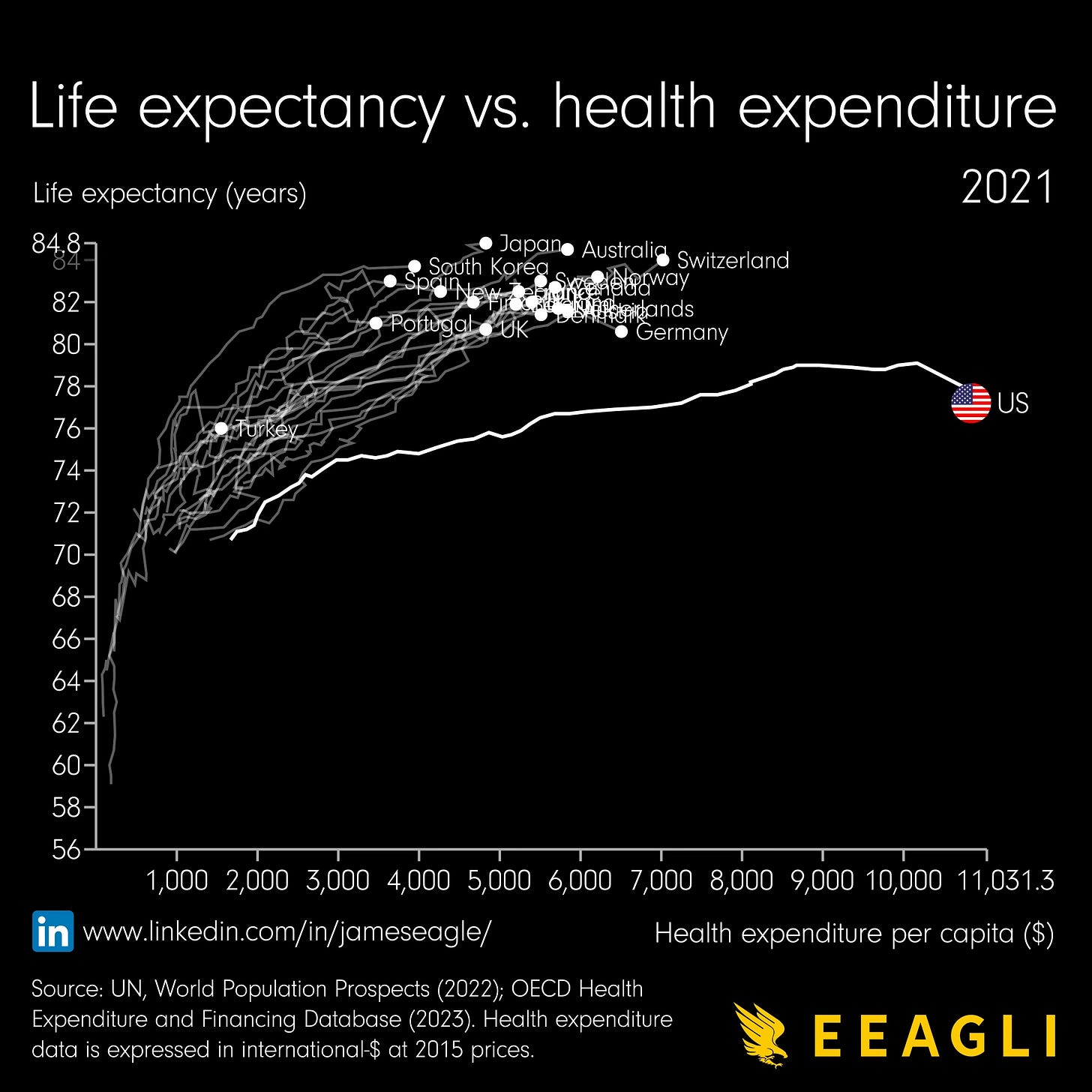Five charts to start your day
Could the US healthcare crisis threaten economic growth?
When a 45-year-old mother of two from Milwaukee, Wisconsin, was diagnosed with stage III breast cancer, her world came crashing down. As she navigated the daunting process of surgery, chemotherapy and radiation, she found herself grappling with the physical and emotional toll of her illness. But, what made it worse was the staggering financial burden of her medical care.
This is a story that many Americans experience, especially now that healthcare costs in the US are spiralling out of control.
Healthcare costs have risen to a staggering $11,031.29 per capita and have far outpaced all other wealthy nations. In fact, they have ballooned from a mere 5 per cent of GDP in 1962 to a whopping 17 per cent in 2022, which has likely contributed to the nation's burgeoning debt levels.
The primary culprits behind this unsustainable trajectory are an ageing population and the relentless rise in medical service prices, which have consistently outpaced inflation due to the adoption of expensive new technologies, administrative waste and hospital consolidation.
The ever-increasing cost of healthcare threatens to stifle economic growth, erode disposable incomes and push more Americans into financial difficulty. With the 2024 presidential election on the horizon, the question of how to rein in healthcare costs and ensure access to affordable isn’t really being addressed by either candidate. It is like that this is a can that will be kicked further down the road.
Source: Eeagli
Takeaways:
I published this chart last week, and there was a lot of discussion about it on both LinkedIn and Reddit. It got pretty heated, actually. However, there were some interesting observations.
Many Americans pointed out that the problem might not be the cost of healthcare, but poor nutrition, bad lifestyles and a lack of exercise.
Another observation was that in public healthcare systems, it's difficult to account for the true cost of healthcare. There are indirect costs, cross-subsidisation and shared spending with other parts of government expenditure. Meanwhile, in an insurance-based system, every healthcare activity is a line item that can be scrutinised by the health insurance company. That level of transparency can make a health insurance-based system seem expensive.
Again, this is true to an extent, but then again, Switzerland has an insurance-based healthcare system and it is a lot cheaper than the US. However, what I have observed after living in a country with public healthcare before is that there is a difference.
Insurance-based healthcare systems don’t place much importance on general medicine because that doesn’t make much money. More attention is paid to specialisation. Personally, I have voluntarily opted here to have a house doctor or general practitioner who has a much broader knowledge of medicine. I think it’s safer.
Coming up:
The largest private equity firms in the world
Intel falls by a third in 2024
China leads the charge in diversifying away from the US dollar
How many push-ups can you really do?
If you like the sound of that line up, this is usually a paid newsletter. You basically get all my best ideas daily. Hit the subscribe button if you are interested and this will be sent to your inbox daily.




